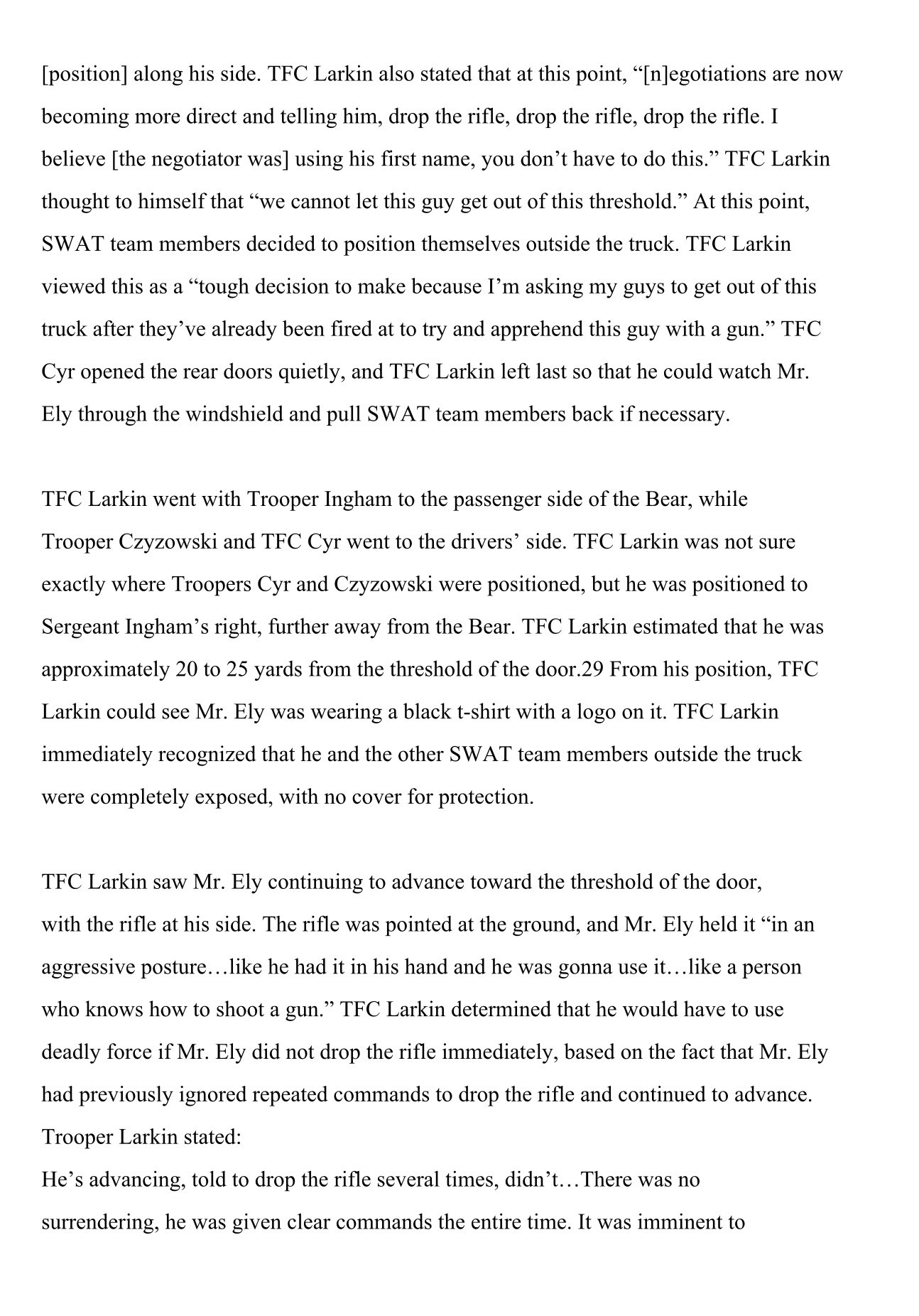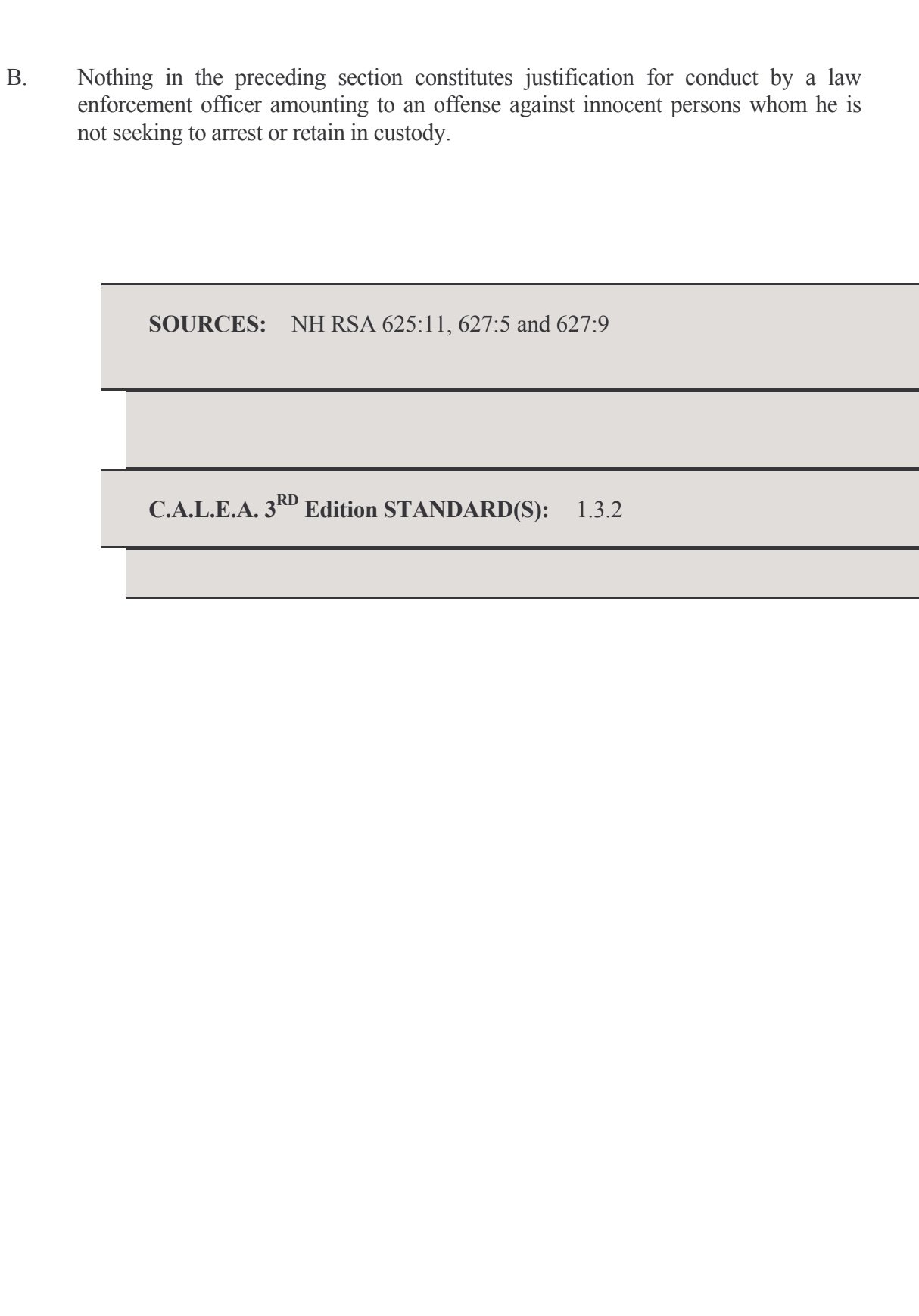Shooting To The Top (pt. III)
It has often been said that “Legislation is like sausage: No matter how good the end product is, you don’t want to watch them being made.” If making laws is an ugly business, enforcing them can be downright hideous. After all, the word “force” appears in “enforcement” for a reason. Forcing compliance with laws isn’t fun for anyone involved and it frequently involves risk of injury to all parties.
That said, laws, policies, and regulations are in place to ensure that when force is deployed, it is done so in the appropriate manner and degree commensurate with the given situation. One axiom that appears in numerous department policies and lesson plans across the nation is this: “When suspect resistance ends, excessive force begins.” (See receipts.) In other words, the second the “bad guy” stops fighting, the law enforcement officer must stop using force on him. Probably the most noteworthy example of this is the Rodney King case. During the 81 second use of force incident, there were approximately 56 baton strikes delivered to King by LAPD Officers. Federal District Court Judge John G. Davies found that all but about 15 seconds (which included about 7 blows) was justified. Nevertheless, once King stopped resisting, the Officers had a moral and legal obligation to cease their use of force. (See NY Times article on King beating in Receipts)
Right here in New Hampshire we had an incident that echoes this issue. On May 11, 2016, New Hampshire State Trooper Andrew Monaco assisted Massachusetts State Police in a pursuit that crossed into New Hampshire. The vehicle being pursued had evaded officers while traveling through neighborhoods at speeds well over 100 miles per hour. The suspect had also crashed at least once and may have attempted to run the Troopers off the road. Spike strips (considered a use of force) were deployed. Up until this point, using force to stop this reckless and dangerous operator was fully justified.
The fleeing pickup truck eventually stopped. The motorist exited the vehicle and dropped to his knees in compliance with the Trooper’s verbal commands. Trooper Monaco along with a Massachusetts Trooper then approached the motorist and punched him several times as he was on the ground. The time between the motorist surrendering (dropping to his knees) and the punches being thrown is about 7 seconds. (See YouTube link to helicopter video of incident in Receipts.)
New Hampshire State Police Colonel Bob Quinn (now Commissioner Quinn) was quick to act. Trooper Monaco was immediately relieved of duty and suspended without pay. Shortly thereafter, he was terminated from the Division of State Police, and charged criminally by the New Hampshire Department of Justice with three counts of Simple Assault.
Fired. Arrested. Charged with 3 counts of Simple Assault for punching a guy 7 seconds after he surrendered…
Fast forward to March 31, 2021, in Claremont, New Hampshire. A mentally distraught 40-year-old named Jeffery Ely had barricaded himself in his garage after randomly discharging his rifle. Claremont Police sought assistance from the New Hampshire State Police SWAT Team. Ely appeared to be having a mental breakdown, and negotiations for his surrender soon deteriorated. At one point, the SWAT Team used the “Bear” (their tactical vehicle) to force open the door to Ely’s garage. Ely responded by firing his weapon. New Hampshire State Police SWAT members returned fire and Ely was struck. He dropped his rifle and fell to the floor in a seated position.
For sixteen seconds, Jeffery Ely sat on the floor, unarmed and defenseless. He did not threaten anyone verbally. He was no longer holding his rifle. He was wounded and done fighting. In short, his resistance had ended. This was the time to tactically approach him, place him in handcuffs and secure his weapon. This was the time to begin rendering aid and try to save his life, but that’s not what happened. Sixteen seconds after Ely was wounded, dropped his gun, and sat helplessly on the floor, three more shots were fired into him.
The Division of State Police has a long history of promoting Troopers shortly after they kill someone in the line of duty, and it would appear Trooper Shane Larkin was looking for some career advancement. Larkin is the one who put those three rounds into Ely as he sat wounded on the floor. Larkin said he saw Ely’s hand move. He admitted Ely wasn’t reaching for the weapon. He simply moved. All that means is that Ely was still alive. The three shots Larkin fired were nothing more than a coup de grace: shots to finish him off. So egregious was Larkin’s actions that another Trooper had to yell at him, “He’s down, Shane, he’s down.” (See Larkin’s interview with AG in Receipts.)
Sixteen seconds. Count them out and see how long that is. Sixteen seconds after Ely stopped resisting, Trooper Larkin fired three more rounds into an unarmed, non-resistant suspect. We know for certain that it was sixteen seconds because a nearby surveillance video (equipped with audio) recorded the sounds of the gunfire. (See receipts.) What could have possibly motivated Trooper Larkin to shoot three rounds into a helpless, defenseless man as he sat unarmed on the floor? The answer may lie in yet another SWAT call.
On November 7, 2019, the NH State Police SWAT Team responded to an armed barricaded subject in Ossipee. Local officers had attempted to arrest a subject named John Swanson on a warrant. Swanson allegedly refused to come out of the house. The State Police SWAT Team arrived on scene to assist and eventually shots were fired. Swanson was struck and wounded 4 times, and he was subsequently taken into custody.
The post-shooting investigation revealed that members of the elite State Police SWAT Team fired a total of thirty-one (31) rounds and managed to strike Swanson only 4 times. (a 12.9 % hit ratio) He was wounded in the left shoulder, right forearm and right and left buttocks. According to eyewitnesses, as Swanson was loaded into the ambulance, he mocked the Troopers who shot him for being unable to kill him. Only sixteen months later, Trooper Larkin made damn sure he and his fellow SWAT members would not be mocked again when he put three finishing rounds into Jeffery Ely.
The Attorney General’s Office cleared all the Troopers involved in the Claremont shooting. There is no doubt the initial exchange of gunfire with Jeffery Ely was justified. However, it took almost a year for the AG to arrive at this finding. This was undoubtedly because of those 16 seconds and three extra rounds. It’s tough to justify those shots. In his post-incident interview with the AG’s office, Larkin even states that he is accountable for every round fired. (See Receipts) That means he knows each and every round must be a justified deployment of lethal force.
In summary, for RobbiLeaks readers, here’s how it works: If you are not friends with Bob Quinn, (Monaco was not, and got away with one in Salem, so karma got his ass) punching a guy 7 seconds after he gets on the ground and surrenders will get you fired and charged with a crime. If you are friends with Bob Quinn (and Larkin is), you can shoot a suspect 3 times, 16 seconds after he drops his weapon, and sits on the ground in surrender. Not only will you not be fired nor charged, but you will be promoted. Yes. Shane Larkin was promoted to Sergeant shortly after the Claremont shooting. He has since been promoted again to Lieutenant.
Once again, the standards of conduct by which Troopers are judged appear to be based entirely on personal relationships with certain high-ranking members.
Fairness. Professionalism. Integrity.
Surveillance footage of the shooting incident in Claremont, 3/31/2021 (Note: the amount of time between the two shootings.)


























